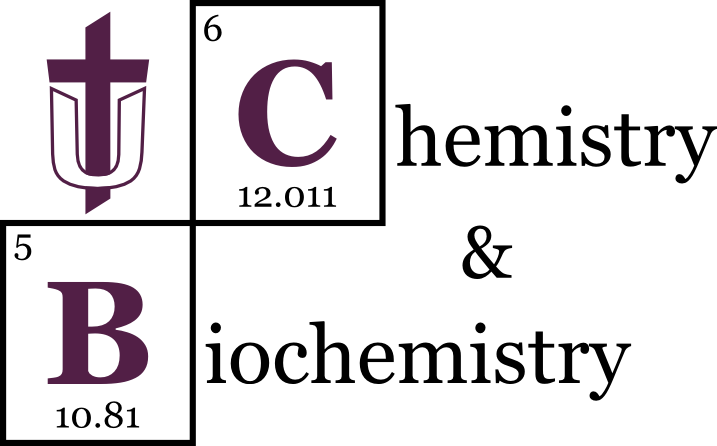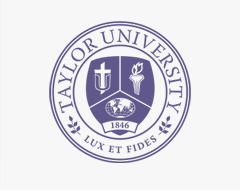By challenging our students through rigorous classes, from computational chemistry to bio-chemistry, we prepare our Chemistry majors for the next step toward graduate school, pre-health profession school, or any chemistry career. The breadth and flexibility of the Chemistry program allows all Chemistry and Biochemistry students o finely tune their degrees to best reach their goals.
Taylor offers numerous chemistry research opportunities that build resumes and count toward academic credit. Some grant programs, such as Taylor's Faculty Mentored Undergraduate Scholarship program, pay students to do research projects during the summer or academic year and gain hands-on experience with spectroscopic, spectrometric, electrochemical, chromatographic, and hybrid analytical instrumentations.
Documents
Educational Resources: Curie Point Engine, Patricia Stan and Emily Knight
Educational Resources: Exchange Rates and Unit Conversion, Patricia Stan and Emily Knight
Educational Resources: Homemade Fluorometer, Patricia Stan and Emily Knight
Educational Resources: Ionic Matching, Patricia Stan and Emily Knight
Educational Resources: Magnets, Patricia Stan and Emily Knight
Educational Resources: Polymers, Patricia Stan and Emily Knight
Posters
Development of Chemistry Activities for Local Outreach in STEM, Patricia Stan and Emily Knight
Published Articles
Acetylation labeling mass spectrometry: A method for studying protein conformations and interactions, Brad King, Lynne Normant, Daniel King, and Daniel Storey
A Computational Approach to Understanding Crop Disease Resistance and Susceptibility, Andy Davisson, Katie Speidel, Jason Stegink, and Daniel King
Analysis of Iron and Calcium in a Geothermal System Outflow Stream, Timothy Griffiths, Emily Hart, Patricia Stan, and Daniel King
Comprehensive glycan analysis of recombinant Aspergillus niger endo-polygalacturonase C, Bryan Woosley, Min Xie, Lance Wells, Ron Orlando, Derek Garrison, Daniel King, and Carl Bergmann
Glycan analysis of recombinant Aspergillus niger endo-polygalacturonase A, Bryan D. Woosley, Young Hwan Kim, V.S. Kumar Kolli, Lance Wells, Dan King, Ryan Poe, Ron Orlando, and Carl Bergmann
Integrated TGA, FTIR, and Computational Laboratory Experiment, Andrew T. Pemberton, D. Brandon Magers, and Daniel A. King
Mapping Glycans onto Specific N-Linked Glycosylation Sites of Pyrus communis PGIP Redefines the Interface for EPG−PGIP Interactions, Jae-Min Lim, Kazuhiro Aoki, Peggi Angel, Derek Garrison, Daniel King, Michael Tiemeyer, Carl Bergmann, and Lance Wells
Mechanisms of the Ethynyl Radical Reaction with Molecular Oxygen, Michael Bowman, Alexandra Burke, Justin Turney, and Henry Schaefer III
Methods for Essential Tremor Assessment: Acoustic Tremor Monitoring (ATM) and Rhythmic Spirals (RS) Methods, Emily Hart, Caroline Chow, Patricia Stan, and Daniel King
Monitoring CO2 Fixation Using GC−MS Detection of a 13C-Label, Daniel G. Hammond, April Bridgham, Kara Reichert, and Martin Magers
Open-Loop Geothermal Discharge Stream Design Affects the Precipitation of Calcium, Marissa L. Kneer and Daniel King
Quicklime Purity Analysis by Calorimetry, Kelly Pugh, Ryan Poe, and Daniel King
The Effects of Acute Exercise and Meat Fasting/Feasting on Urinary 3-methylhistidine by Liquid Chromatrography - Mass Spectrometry, Daniel King, Kim Cleary, Scott Fenstermacher, Brayton Kiedrowski, Ben Hayes, Olivia Auell, Caroline Chow, and Erik Hayes
The Non-Covalently Bound SO···H2O System, Including an Interpretation of the Differences Between SO···H2O and O2···H2O, Jonathon Misiewicz, Julia Noonan, Justin Turney, and Henry Schaefer III
The s-homodesmotic method for the computation of conventional strain energies of bicyclic systems and individual rings within these systems, D. Brandon Magers
Writing Instrument Profiles for Mastery of Instrumental Analysis, Daniel King, Jorge Fernandez, and Ruth Nalliah




